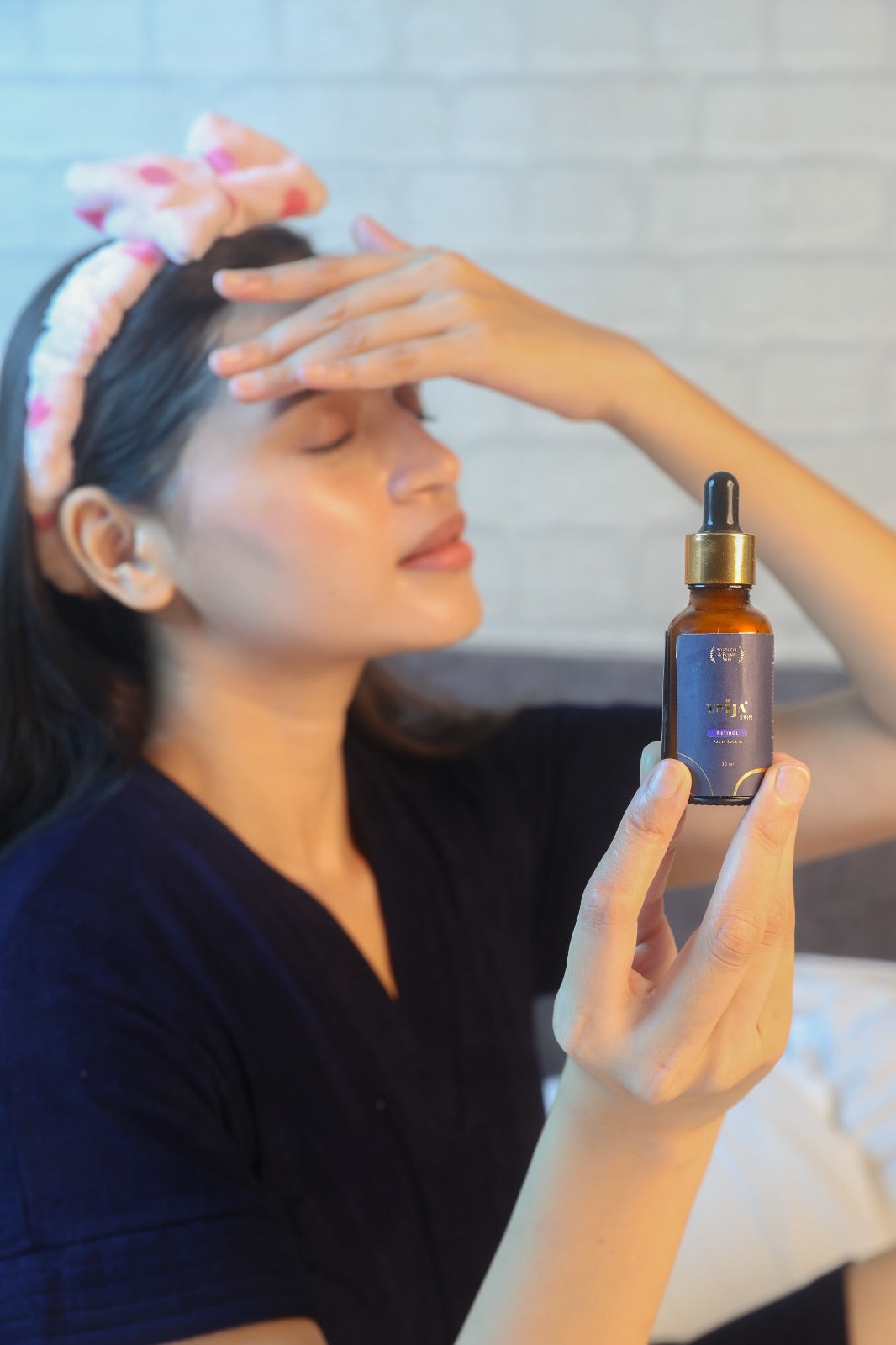
Skin’s aret of letting go- all you need to know about exfoliation
If you don’t exfoliate at least once a week, it does not matter if you have a 10-step skincare routine or not. You’re missing out on an absolute delight of the softest, most luminous and glowing skin that you might experience. Thanks to the pandemic, many of us have tuned in with our health, and taking care of our skin is part of the package. However, if you still haven’t gotten on the Exfoliation Express, let’s discover its magic together.
What is exfoliation, and why do you need it in your routine?
A decent routine that includes exfoliating your face, as well as your body, is vital to remove the pile of dead cells from the top of your skin. This unveils luminous, radiant skin; along with keeping acne, blackheads, clogged pores, and dullness at bay. According to various studies, exfoliation also helps in building collagen in your skin, which is a protein critical to maintaining firmness, hydration, and youthfulness of your skin.
The skincare market presents us with two main types of exfoliants- physical or mechanical exfoliants, and chemical exfoliants. Don’t fall prey to this uncomplicated classification; there is an overwhelming categorization of these two umbrella types. Often, the mind is baffled and it is simply confusing to choose between one type of exfoliator. Let’s try to ease the soul of this puzzle once and for all!
Physical v/s chemical exfoliators: which one is better for you?
Physical exfoliants have been around the skincare fraternity for decades. Probably the oldest method of exfoliation, it removes dead skin cells and debris mechanically by a process called abrasion with the help of minute particles or a textured surface. These methods include microfiber cloths, microfiber mittens, micro-beads, scrubs composed of apricot kernel or almond shell, pumice, and other devices like sponges, loofahs, and brushes. Professional methods of physical exfoliation include microdermabrasion (using small needles) and dermaplaning (using a fine scalpel) to exfoliate the skin.
When used in a circular motion, such products buff away dead skin cells. After washing it off, you’ll likely notice the beautiful skin you’ve been missing. This ‘quick-fix’ mechanism of physical exfoliators is one of their main benefits. The catch here is that it is very easy to overdo it by robust rubbing or using scrubs too often. Additionally, ingredients like apricot kernel have the tendency to cause micro-tears in the skin, especially when used on the delicate skin of your face.
On the other hand, chemical exfoliants use chemicals (sounds scary, but it isn’t) to liquefy the “glue” between stubborn skin cells to make them slough off. These chemicals aid in the skin’s cell turnover rate, and show their magic by penetrating deep into the skin. They are classified as-
- Alpha Hydroxy Acids (AHAs)– these are water-soluble acids derived from sugary fruits. Examples of AHAs include glycolic acid, lactic acid, and mandelic acid. The skin is primarily composed of lipids, so they can’t penetrate very deep into your skin. But don’t be fooled by this- they have enough potency to dissolve dead skin cells to reveal supple skin. Primarily, AHAs are used for hyperpigmentation, bumpy skin, and enlarged pores.
- Beta-Hydroxy Acids (BHAs)– this group of chemical exfoliators is oil soluble, implying that they penetrate deeper into the skin to slough off dead cells. The main type of BHA available in the market is the famous Salicylic Acid. BHAs hold a special place in the treatment of comedones like acne and blackheads, as they penetrate follicles and dry out excess oil.
- Poly-Hydroxy Acids (PHAs)– these are the newbies in the family of exfoliating acids. PHAs work similar to other acids, the difference being their mild nature. In fact, they are considered to be ‘second-generation AHAs’– they have a smaller molecular size, which means they won’t penetrate very deep into the skin but provide similar benefits without irritation. This makes them an excellent option for sensitive skin. PHAs include gluconolactone, galactose, and lactobionic acid.
- Enzymatic Peels– an even gentler way to get glowing skin, enzymatic peels use enzymes extracted from fruits like pomegranate, papaya, and pumpkin to dissolve proteins holding your cells together. If your skin gets easily irritated with everything else, enzymatic peels are the way to go. Added bonus: they’re safe even if you are pregnant or lactating!
- Professional methods include 20-40% glycolic acid, 10-40% trichloroacetic acid, and laser resurfacing.
As acids work by penetrating into your skin, the result will not be instantaneous, but you’ll surely notice a drastic improvement in the appearance of your skin with regular use. Just like physical exfoliators, you can easily go overboard with chemical exfoliants and end up with burns and highly inflamed skin. With the exception of PHAs, acids are bound to leave your skin more photosensitive. This mandates the use of sunscreen (which is obligatory regardless of using a peel).
We can’t decide on a winner- both these exfoliators can complement each other if used in the right way. Physical exfoliators are good to get rid of hard, stubborn skin. Go for AHAs if your primary concern is hyperpigmentation or signs of ageing. On the other hand, BHAs work well for acne, clogged pores, and comedones. PHAs and enzymatic peels are gentle versions of chemical exfoliators, making them an immaculate option if you have sensitive skin.
Whatever method you choose, ideally you should exfoliate no more than twice per week. While you should opt for chemical exfoliation for delicate areas like your face, physical exfoliation might be the way to go for the rest of your body. If you want to mechanically exfoliate your skin, use milder products (anything other than apricot kernels will do). If you decide to opt for chemical exfoliants for your skin, try out gentle acids such as mandelic acid at first. Don’t use two products in the same area simultaneously & don’t introduce too many products into your routine all at once.




